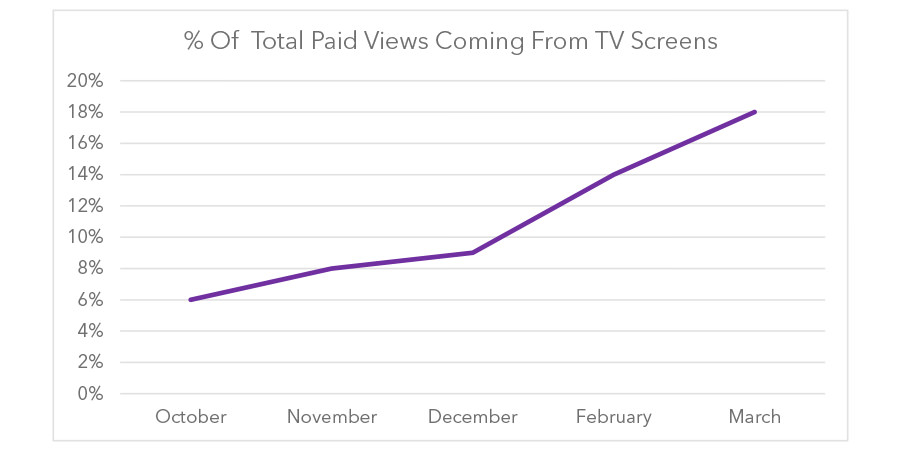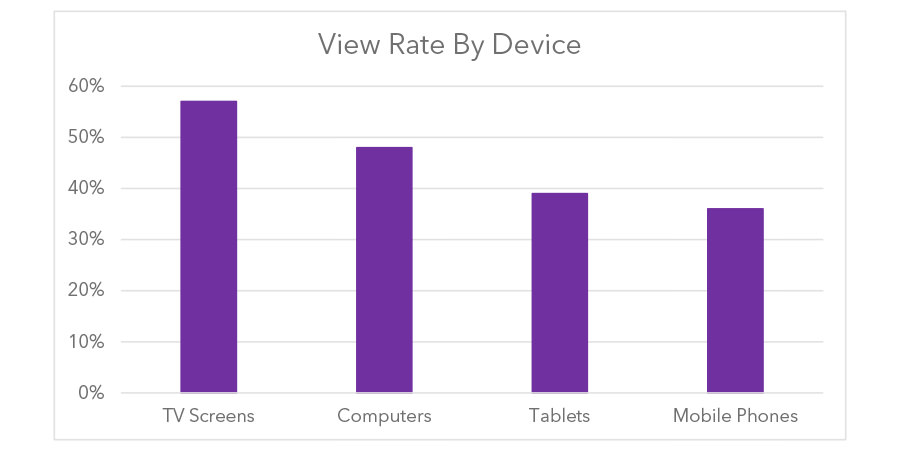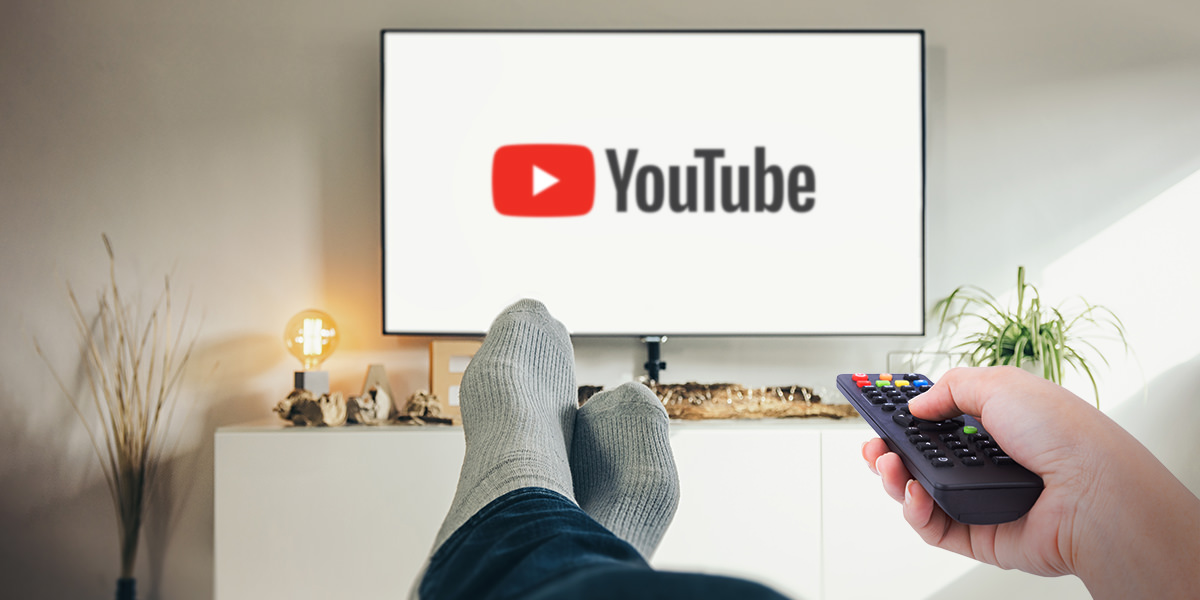For years, YouTube advertisers were able to segment performance data from their YouTube campaigns by the three main device categories: computers, mobile devices, and tablets. While this covered the vast majority of YouTube video views for some time, YouTube viewing habits began to significantly change with the rise of streaming, with over 180 million hours/day of YouTube content being consumed on TV Screens every day! Recognizing this, Google announced in Q4 of 2018 that they were finally adding a “TV Screen” device type into the Google Ads interface, which would aggregate viewing data from Smart TVs, streaming devices, and gaming consoles.
Since Google’s announcement in October, we have been seeing TV screens play an increasingly important role in the YouTube campaigns we are running for clients. For example, one of our clients in the toy industry has been seeing continuous monthly growth in the percentage of YouTube views (from our In Stream advertising campaigns) that are coming from TV screens:

In only a span of a few months, this percentage of total views coming from TV has increased by 3 times! Not only are we seeing strong growth from this device segment, but the way these users interact with our video ads has been very positive. View Rate (defined as the percentage of users who choose to watch 30+ seconds of a video ad without skipping) is a key metric in evaluating the success of a YouTube advertising campaign. Using the same client as an example, we’ve seen TV Screens generating view rates notably higher than any of the three other device categories:

Extremely high view rates combined with low Cost Per Views (20% lower than the other devices!) have made TV Screens quickly become the top-performing device category for this client, and continues to trend upward.
With the shift towards cord-cutting and streaming showing no signs of slowing down, here are a few ways YouTube advertisers can take action on their device segmentation data:
- Bid adjustments: If TV Screens are generating the strongest results but are still not making up a large portion of overall video views, consider positive TV Screens bid adjustments to help scale those strong results.
- Tailoring ad content: High view rates combined with larger screen sizes make YouTube ads on TV Screens a unique experience compared to other device types. Consider creating content specifically for TV Screens to take advantage of these viewing habits.
- Call To Actions: Although users may be more likely to watch your ads on TV screens to completion, driving traffic to a designated landing page may not be as straightforward as it would be on Desktop or Mobile. Consider what your CTAs are and how the TV Screen viewing experience may affect the actions you are wanting your audience to take.
- Target cord-cutters: Google allows advertisers to target users who can be difficult to reach using traditional media with the Light TV Viewers Affinity Audience. This audience segment can also be targeted in combination with other criteria for further relevancy (Demographics, Topics, etc.).
